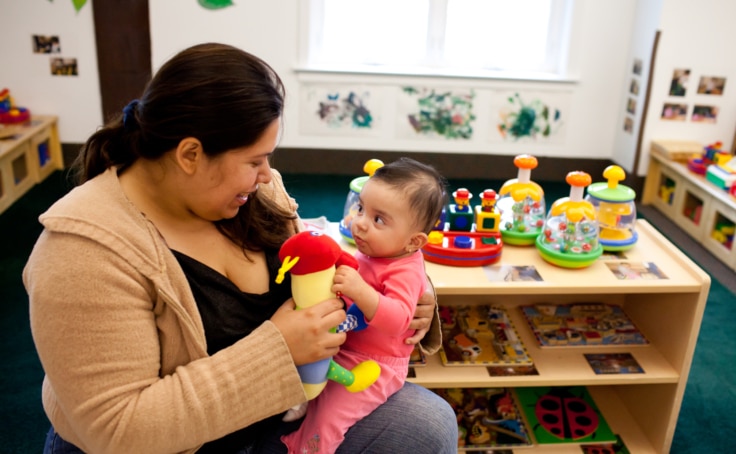What does trauma-informed care mean?
The more we support children who have had traumatic experiences, the better their chance of thriving.


Hannah Schottenfels, LMSW, IMH-E, is a Licensed Social Worker, Infant Mental Health Specialist, and Endorsed Reflective Supervisor with the Michigan Association of Infant Mental Health. She serves as a Training and Technical Assistance Specialist with Safe Babies, a ZERO TO THREE program, in her hometown of Detroit. With experience in home visiting, social-emotional consultation, training, and reflective supervision, Hannah’s work is grounded in community, relationships, cultural values, and transformative justice.
For those in foster care, these experiences happen in real time and while they’re still adjusting to a new home, while they’re visiting their parents under supervision, and while their entire world remains uncertain.
Children under age 3 are the largest group entering the child welfare system, accounting for more than 1 in 3 foster care entries. These babies are in the most sensitive period of brain development, yet they are also the most vulnerable to relational disruption.
As an educator, your consistent, loving care matters more than you may realize. You can’t change a child’s past, but you can shape how safe they feel today and play a role in prevention by supporting their healthy development and family connections.
This can create a deep sense of loss and confusion.
Young children may show signs of distress through:
Research shows that repeated separations disrupt secure attachment, especially in the first three years. But when babies experience consistent, responsive caregiving, even in temporary settings, their ability to trust and regulate can be rebuilt.
In your classroom, stability becomes a form of healing.
What helps:
These simple, yet predictable structures counter the instability children may feel elsewhere and help strengthen the bond between child and caregiver. They are most effective when grounded in strong, reliable relationships with adults in a child’s life.
Like children processing grief, those in foster care often express their inner world through play. They may reenact themes related to separation, such as “goodbyes” or “hiding”, during play.
Pay attention to:
Your observations can be a bridge to early identification of mental health needs and timely supports.
The more we support children who have had traumatic experiences, the better their chance of thriving.
It can include their parents, resource caregivers, kin and siblings in other homes. When educators honor all these connections, they promote healing and strengthen protective factors.
Ways to bridge the gap:
Trust-building between caregivers benefits the child. It reinforces a sense of unified safety across settings.
Parents have said peer mentors, supportive educators, and providers who listen with respect made the difference between disengaging and staying connected.
Educators can help by:
How can including parent voice change the trajectory of a baby involved in child welfare?
Watch for:
Many states have IECMH consultants available to ECE providers. In states without specific IECMH consultation, early intervention referrals would respond.
By offering stability, warmth, and respect for every relationship in a child’s life, you contribute to their healing and healthy development. At the same time, we must remember that educators need support, too. Caring for children who have experienced trauma can be demanding, and no one should carry that weight alone. Reflective supervision, ongoing training in trauma-responsive practices and opportunities for peer connection are essential supports that combat compassion fatigue and sustain early childhood educators in this work.
When educators are supported, they are better able to provide the consistent, nurturing care that babies in foster care need the most.

